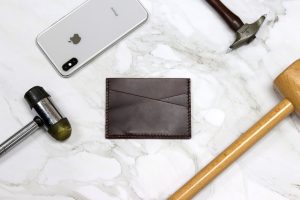
In the world of B2B, selling to a potential customer is like getting past a series of tough gatekeepers. And one of the toughest? Procurement. These are the people who ask the hard questions, push for better terms, and need more than just promises. They want proof. Solid, verifiable, trust-building proof.
This is where social proof comes in.
What is Social Proof?
Social proof is a fancy way of saying, “Other companies trust us, so you can too.” It’s how brands build trust fast, especially when buyers are cautious. You’re not just selling your product—you’re easing doubt and showing that your solution actually works.
But here’s the catch: what works on your marketing site often isn’t tough enough to survive a procurement review. Procurement wants hard evidence, not just pretty logos and vague testimonials.
Why Procurement is a Tough Crowd
Procurement teams don’t fall for fluffy content. They’re trained to sniff out hype. Their job is to:
- Reduce risk
- Ensure compliance
- Protect budgets
They look at your claims with suspicion. So, your social proof has to be robust, specific, and impossible to poke holes in.
Types of Social Proof That Actually Work
You’ve got plenty of options when it comes to showing off social proof, but not all are created equal in the eyes of procurement. Let’s go through some winners:
1. Case Studies
This is your best friend. A good case study includes:
- The customer’s name (yes, name-drop when you can)
- The problem they faced
- How your product helped
- Quantitative results (think numbers!)
Better yet, include quotes from stakeholders in that company. The more specific, the better.
“Switching to their solution cut our contract processing time by 42% in just six months.” – Director of Procurement, MidCap Tech
2. Logo Walls with Context
Everyone loves a good logo wall. But procurement? They want details. Instead of a row of logos, add context. Like:
- “Used by 18 of the Fortune 100 to manage compliance.”
- “Trusted by 3 of the top 5 retail banks.”
The more specific and quantifiable, the better.

3. Peer Reviews & Ratings
Sites like G2, Capterra, and TrustRadius are goldmines. Procurement teams love them because they offer:
- Unfiltered opinions
- Comparisons to other vendors
- Category rankings
Keep this content fresh and genuine. Highlight:
- Star ratings (“4.7 stars from 300+ users”)
- Badges (“Leader in G2 Winter Report 2024”)
- Quotes from companies like theirs
4. ROI Calculators (That Don’t Lie)
Fancy calculators can help, but only when they’re grounded in real, customer-proven data. Avoid fluff estimates like “could save up to 50%.” Instead, say something like:
- “Based on 240 customers, average yearly savings = $31K.”
This is music to procurement ears.
5. Analyst Reports
If you’ve been featured in a Gartner Magic Quadrant, a Forrester Wave, or any respected industry report—say it loud. Procurement knows these sources are trusted.
Even a mention in a niche analyst brief can pack power if it reflects customer satisfaction and product capabilities.
What Makes Social Proof “Procurement-Grade”?
You can’t just throw a testimonial on a landing page and expect it to sway a procurement officer. You need to upgrade your proof. Here’s how:
- Specificity: “Revenue increased by 28%” is better than “improved financial performance.”
- Credibility: Include titles, company names, and metrics if the client approves.
- Consistency: Make sure what’s promised in marketing aligns with what’s in your contracts and documentation.
- Third-party validation: Let others do the talking—via quotes, awards, or industry reports.
Don’t Just Share—Strategize
One mistake B2B teams make is using social proof like glitter—throwing it all over and hoping it sticks. Instead, be intentional. Match the proof to the stage of the deal:
- Awareness: Big logos, results snapshots, industry badges
- Consideration: Peer reviews, ROI calculators, in-depth case studies
- Procurement: Analyst reports, ROI summaries, legal/compliance proof, proof of delivery cases

Make Procurement Say “Yes” Faster
When procurement asks, “Who else is using this?”, don’t just say “lots of companies.” Say:
“We helped BankCorp reduce vendor risk by 35% within 90 days. Here’s the full report, with KPIs and timeline.”
Show. Don’t just tell.
And give them proof they can forward to their colleagues. Easily digestible attachments, PDFs with quotes and metrics, and short one-pagers go a long way.
Bonus: Let Your Customers Be Your Sales Team
Your happiest customers are often your best sellers. Set up references. When deals get stuck, let a fellow buyer speak directly to the prospect’s procurement head.
Nothing builds trust like hearing, “We went through the same process… and here’s why we chose this vendor.”
Final Thoughts
In B2B sales, getting the yes is often about getting past procurement. And to win that game, you need social proof that’s rock-solid.
Forget vague claims and generic testimonials. Focus on:
- Specific numbers
- Real names
- Recognized 3rd-party validation
- Clear, strategic presentation of proof
When you do this right, procurement doesn’t just nod—they approve.
And that, friends, is how you turn proof into profit.






